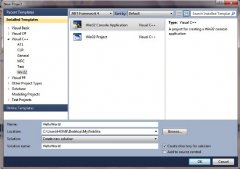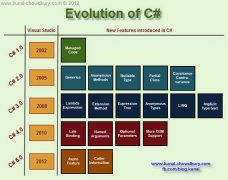C# 通过Emgu CV 人脸检测
1、Emgu CV使用opencv人脸检测,C#使用代码(转载于Emgu CV Example):
using System; using System.Collections.Generic; using System.Diagnostics; using System.Drawing; using Emgu.CV; using Emgu.CV.Structure; #if !IOS using Emgu.CV.Cuda; #endif namespace FaceDetection { public static class DetectFace { public static void Detect( Mat image, String faceFileName, String eyeFileName, List<Rectangle> faces, List<Rectangle> eyes, bool tryUseCuda, bool tryUseOpenCL, out long detectionTime) { Stopwatch watch; #if !IOS if (tryUseCuda && CudaInvoke.HasCuda) { using (CudaCascadeClassifier face = new CudaCascadeClassifier(faceFileName)) using (CudaCascadeClassifier eye = new CudaCascadeClassifier(eyeFileName)) { watch = Stopwatch.StartNew(); using (CudaImage<Bgr, Byte> gpuImage = new CudaImage<Bgr, byte>(image)) using (CudaImage<Gray, Byte> gpuGray = gpuImage.Convert<Gray, Byte>()) { Rectangle[] faceRegion = face.DetectMultiScale(gpuGray, 1.1, 10, Size.Empty); faces.AddRange(faceRegion); foreach (Rectangle f in faceRegion) { using (CudaImage<Gray, Byte> faceImg = gpuGray.GetSubRect(f)) { //For some reason a clone is required. //Might be a bug of CudaCascadeClassifier in opencv using (CudaImage<Gray, Byte> clone = faceImg.Clone(null)) { Rectangle[] eyeRegion = eye.DetectMultiScale(clone, 1.1, 10, Size.Empty); foreach (Rectangle e in eyeRegion) { Rectangle eyeRect = e; eyeRect.Offset(f.X, f.Y); eyes.Add(eyeRect); } } } } } watch.Stop(); } } else #endif { //Many opencl functions require opencl compatible gpu devices. //As of opencv 3.0-alpha, opencv will crash if opencl is enable and only opencv compatible cpu device is presented //So we need to call CvInvoke.HaveOpenCLCompatibleGpuDevice instead of CvInvoke.HaveOpenCL (which also returns true on a system that only have cpu opencl devices). CvInvoke.UseOpenCL = tryUseOpenCL && CvInvoke.HaveOpenCLCompatibleGpuDevice; //Read the HaarCascade objects using (CascadeClassifier face = new CascadeClassifier(faceFileName)) using (CascadeClassifier eye = new CascadeClassifier(eyeFileName)) { watch = Stopwatch.StartNew(); using (UMat ugray = new UMat()) { CvInvoke.CvtColor(image, ugray, Emgu.CV.CvEnum.ColorConversion.Bgr2Gray); //normalizes brightness and increases contrast of the image CvInvoke.EqualizeHist(ugray, ugray); //Detect the faces from the gray scale image and store the locations as rectangle //The first dimensional is the channel //The second dimension is the index of the rectangle in the specific channel Rectangle[] facesDetected = face.DetectMultiScale( ugray, 1.1, 10, new Size(20, 20)); faces.AddRange(facesDetected); foreach (Rectangle f in facesDetected) { //Get the region of interest on the faces using (UMat faceRegion = new UMat(ugray, f)) { Rectangle[] eyesDetected = eye.DetectMultiScale( faceRegion, 1.1, 10, new Size(20, 20)); foreach (Rectangle e in eyesDetected) { Rectangle eyeRect = e; eyeRect.Offset(f.X, f.Y); eyes.Add(eyeRect); } } } } watch.Stop(); } } detectionTime = watch.ElapsedMilliseconds; } } }
2、参数说明,人脸检测耗时影响,,精度影响
Rectangle[] facesDetected = face.DetectMultiScale( ugray, //灰度图像,单通道图片 1.1, //scaleFactor 1.1~1.5 越大耗时越低、检测精度越低 10, //minNeighbors 3~15 越高耗时越低 new Size(20, 20)); //最小脸部大小? //最大脸部大小, 越大耗时越低
DetectMultiScale支持多线程,加载人脸识别模型可以全局初始化,减小耗时。
using (CudaCascadeClassifier face = new CudaCascadeClassifier(faceFileName))
using (CudaCascadeClassifier eye = new CudaCascadeClassifier(eyeFileName))
温馨提示: 本文由Jm博客推荐,转载请保留链接: https://www.jmwww.net/file/71510.html




